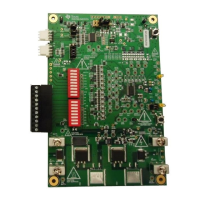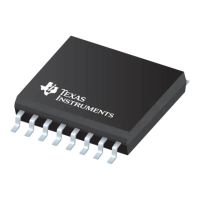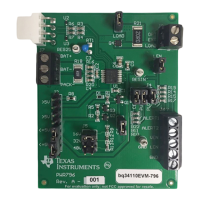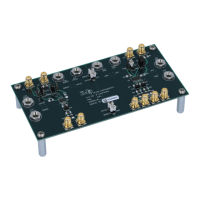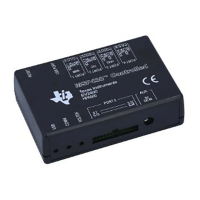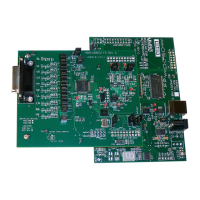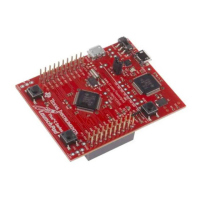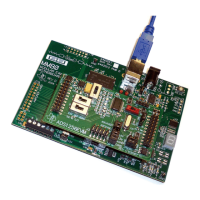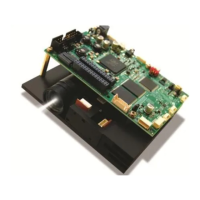www.ti.com
Software Operation
Another use of the status section is to determine the reason the part has turned off the FETs. For example
if during test the EVM has turned off the FETs but the VREG is still on, the interface might be connected
and the status polled to see what fault the device identifies.
5.4 Basic Operation With Software
The following steps are suggested for exercise of more of the device features using the EVM in its default
10-cell configuration and EEPROM settings. The board is connected as shown in Figure 3. Remember
that timing will be incorrect as described in Section 5.3.
1. Install the software.
2. Connect the USB Interface Adapter to the computer with the USB cable.
3. Remove the screw terminal blocks from J4 and J5 and save for later use. Connect the cell simulator
board to the bq77910A main board J4 and J5. Support the under side of the EVM board as the
connectors are pressed together.
CAUTION
Do not connect or remove the resistive cell simulator from the board with power
applied. The resistor pull down or up from intermittent connections will
overstress the device inputs.
4. Connect the 10 pin ribbon cable from the USB Interface Adapter to the EVM J3.
5. Connect an isolated power supply negative to BATT– and positive to PACK+. Adjust the voltage to
approximately 32V.
6. Connect a ~15k resistor from the power supply positive to the CHGCTL terminal. This will wake the
part; leave the resistor connected.
7. Start the software.
8. Connect a disabled load to the pack terminals.
9. Select the polling Enable button in the software window.
10. Observe the status values are bright green.
11. Set a current on the load within the capability of the supply and board.
12. Decrease the power supply voltage to approximately 25V. Observe using load current stops and the
UV status indicator turns red.
13. Increase the supply voltage to approximately 31V. Observe the UV indicator turns green.
14. Load current may not resume until the load is disabled or disconnected.
15. Increase the supply voltage to approximately 43V. Observe the OV status indicator turns red.
16. Decrease the power supply voltage to approximately 32V. Observe that the OV indicator turns green.
17. Disable polling.
18. Disable the load.
19. Set the supply to 0V and turn off equipment.
5.5 Operation with Other interfaces or Hosts
The bq77908-10-GUI-SW software does not support other interfaces.
Communication with the bq77910A from other hosts should be straightforward. Refer to the datasheet for
timing and interface details. On the EVM, zero delay mode can be set to allow communication using a 0.1"
shunt (not provided) at J6 pins 1 to 2, or a signal at ZD on J3. To program, the on-board programming
voltage switch can be used by controlling the PGM signal on J3. Signals should be 3.3V CMOS levels.
17
SLUU855–February 2012 bq77910AEVM
Submit Documentation Feedback
Copyright © 2012, Texas Instruments Incorporated

